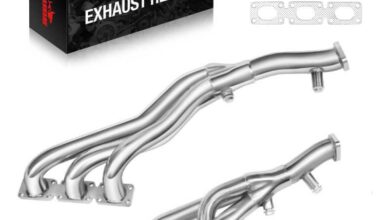Roof Inspections: How to Spot Early Signs of Damage Before Winter

As temperatures begin to drop and winter approaches, your home’s first line of defense—its roof—takes center stage. Heavy snow, freezing rain, and strong winds can place immense stress on your roofing system. That’s why it’s essential to perform a comprehensive roof inspection before winter sets in. Identifying and addressing issues early can prevent costly repairs, interior damage, and even roof failure.
In this blog, we’ll explore how to spot early signs of roof damage and what steps homeowners should take to prepare their roofs for the colder months.
Why Pre-Winter Roof Inspections Matter
Winter weather can turn minor roofing issues into serious structural problems. Ice dams, snow accumulation, and freeze-thaw cycles can exploit even the smallest weakness. Early inspections help:
- Prevent water leaks and ice damage
- Reduce heating costs by improving insulation
- Extend the life of your roof
- Avoid emergency repairs during peak winter storms
A well-maintained roof ensures safety, energy efficiency, and peace of mind throughout the coldest season of the year.
Common Types of Roof Damage to Look For
Roof damage can occur for a variety of reasons—from aging materials and severe weather to poor installation and lack of maintenance. Here are some of the most common problems to watch for:
- Missing or broken shingles
- Warped, curled, or blistered shingles
- Cracked flashing around chimneys or vents
- Gutters filled with granules (a sign of shingle wear)
- Moss or algae growth
- Leaks or water stains on ceilings and attic
- Sagging roof sections or uneven ridges
The key is to catch these signs early, before snow and ice have a chance to worsen the damage.
Step-by-Step Roof Inspection Checklist
Here’s a detailed guide to help you conduct your own roof inspection. While professional inspections are ideal, a careful walk-around and visual check can reveal a lot.
1. Start from the Ground
Begin by examining your roof from a safe distance. Use binoculars if needed. Look for:
- Uneven or discolored patches
- Missing shingles
- Debris buildup in valleys or gutters
- Damaged soffits or fascia boards
Look for signs that indicate moisture problems or structural instability.
2. Check the Gutters and Downspouts
Clogged gutters can cause water to back up under shingles, forming ice dams. Ensure:
- Gutters are securely attached and not sagging
- No shingle granules or debris are accumulating
- Downspouts are clear and directing water away from the foundation
Clean gutters also prevent water overflow and foundation damage.
3. Inspect the Shingles Up Close (If Safe)
If you can safely access your roof, inspect individual shingles for:
- Cracks or brittleness
- Lifting or curling edges
- Bald spots where granules are missing
- Signs of rot or mold
Shingles protect the underlayment and roof deck, so any weakness here can lead to leaks.
4. Examine Flashing and Sealants
Flashing is used to seal areas around chimneys, skylights, vents, and walls. Look for:
- Rust or corrosion
- Loose or missing pieces
- Dried or cracked sealant
- Gaps or watermarks
Faulty flashing is a common cause of roof leaks and must be repaired promptly.
5. Inspect the Attic or Ceiling
Interior signs can often reveal roofing issues before they’re visible outside. Inside your attic or top floor:
- Look for water stains or damp insulation
- Check for mold or mildew
- Inspect for daylight peeking through roof boards
- Feel for drafts or cold spots indicating heat loss
Proper ventilation and insulation are critical to maintaining roof integrity during winter.
Special Considerations Before Winter
Winter poses unique challenges for your roofing system. Make sure to address the following before the first snowfall:
Ice Dams
These occur when melting snow refreezes at the roof’s edge, creating a barrier that prevents proper drainage. Preventative steps include:
- Ensuring proper attic insulation
- Keeping gutters clear
- Installing heat cables if necessary
Snow Load
Heavy snow accumulation can stress the roof’s structure. While most roofs are built to withstand snow, older homes or damaged roofs may not cope well. Reinforce vulnerable areas and remove excess snow when safe.
Frozen Gutters
Frozen water in gutters can crack or pull them away from the roof. Ensure all downspouts drain efficiently and that gutter guards are installed to reduce clogging.
When to Call a Professional
While homeowners can spot obvious signs of damage, some issues are better assessed by a qualified roofing contractor. It’s wise to schedule a professional inspection:
- If your roof is over 15 years old
- After a heavy storm or hail event
- If you notice leaks or mold inside
- Before selling or insuring your home
- Before winter if you’ve never had a formal inspection
Professionals use thermal imaging, drones, and trained eyes to identify problems you might miss.
For homeowners in Ontario, it’s advisable to contact for Vaughan roofing services to ensure your home is ready for the winter months with a thorough inspection and prompt repair services.
Benefits of Regular Roof Maintenance
Routine roof inspections—especially before seasonal changes—can save thousands of dollars in the long run. Key benefits include:
- Cost Savings: Early detection avoids emergency repairs and reduces future expenses.
- Extended Roof Life: Regular upkeep ensures your roof lasts longer.
- Home Value: A well-maintained roof adds to your home’s resale value.
- Peace of Mind: Entering winter with a secure, leak-free roof means fewer worries.
Final Thoughts
A roof inspection may not be at the top of your seasonal to-do list, but it should be. Catching problems early can mean the difference between a minor fix and a full roof replacement. Winter amplifies any existing weakness in your roofing system, making it critical to assess and address concerns beforehand.
Use the tips above to spot early warning signs and take action before the cold sets in. Whether you inspect it yourself or call in professionals, ensuring your roof is winter-ready is a smart, proactive step toward protecting your home and family.




